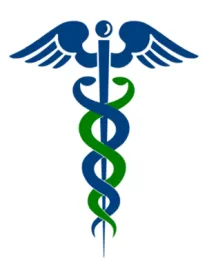In the midst of Congress’ efforts to repeal and replace the Affordable Care Act (ACA), the Medicare Payment Advisory Commission (MedPAC) convened for its second meeting of 2017. The topics discussed during the day and a half of meetings are of particular relevance to hospitals, post-acute care facilities, physicians and non-physician health care professionals.
Key Takeaways
Post-Acute Care (PAC) Unified Payment System
MedPAC believes is it possible for a PAC prospective payment system (PPS) to be implemented as soon as 2021, with a three-year transition period. The draft recommendation, to be voted upon in April and which would be included in the June 2017 report to Congress, also directs the Secretary of Health and Human Services (HHS) to lower aggregate payments by 3 percent. At the same time, the Secretary will need to work to harmonize setting-specific regulatory requirements and periodically revise and rebase payments to keep them aligned with the cost of care. Making regulatory requirements consistent across PAC providers will create more of a level playing field under the new PAC PPS. An example cited by MedPAC staff as a regulation that should be waived is the 60 percent rule for inpatient rehabilitation facilities. When the Commission returns in April, it will have a chance to further discuss and refine this recommendation, as necessary.
Medicare Part B Drug Payment Policy Issues
MedPAC seeks to address Medicare Part B drug payments and is undertaking research and developing policy proposals to constrain price increases for existing drugs. Ideas include improving the current average sales price (ASP) system, specifically through ASP data reporting; implementing an ASP inflation rebate; consolidated billing codes; and updating the wholesale acquisition cost (WAC) payment. MedPAC also is examining the idea of implementing a drug value program (DVP) as a voluntary alternative to the ASP system. To encourage enrollment in the DVP, MedPAC would recommend reducing the ASP add-on. MedPAC’s recommendation on changes to Medicare’s payment for Part B drugs will be included in the June report to Congress. MedPAC clearly favors encouraging providers to enroll in the voluntary DVP, which would use private vendors to negotiate prices and offer providers shared savings opportunities. The DVP design is being informed by lessons learned from the Competitive Acquisition Program (CAP) for Part B drugs.
Merit-based Incentive Payment System (MIPS) and Advanced Alternative Payment Models (APMs)
Based on feedback from the January 2017 meeting, MedPAC believes the MIPS is unlikely to succeed at identifying or paying clinicians for delivering value to the program. As such, MedPAC currently is evaluating methods to help move clinicians away from MIPS to Advanced APMs, as well as how to encourage the uptake of providers in two-sided risk accountable care organization (ACO) models. For example, MedPAC is considering building on the current ACO model by making the risk corridor asymmetric (higher upside risk than downside risk). MedPAC also is examining proposals that would better support primary care, which has been a priority focus for the Commission as of late.
Premium Support
MedPAC has started to examine premium support for Medicare, which has been proposed by House Republican leadership in its Better Way Agenda. The Commission is just beginning its exploration without taking a position on premium support. At the beginning of the discussion, Commission Chairman Francis J. Crosson noted that the Commission is trying to be helpful to policymakers by evaluating modeling aspects that Congress might take into consideration, should policymakers choose to move the program to a premium support model. Commissioners recognize that this is an extremely complex topic, and they do express concern with the model and the impact the premium support model might have on beneficiaries.
Looking Ahead
The MedPAC March Report to Congress will be released sometime later this month, likely prior to St. Patrick’s Day. The Commission will meet one more time (April 6-7, 2017) and vote on all outstanding recommendations before wrapping up its 2016-2017 public meeting season. Commission staff will subsequently be hunkered down in their Washington D.C. offices to prepare the June report to Congress, which will be released in mid-June.



 />i
/>i
